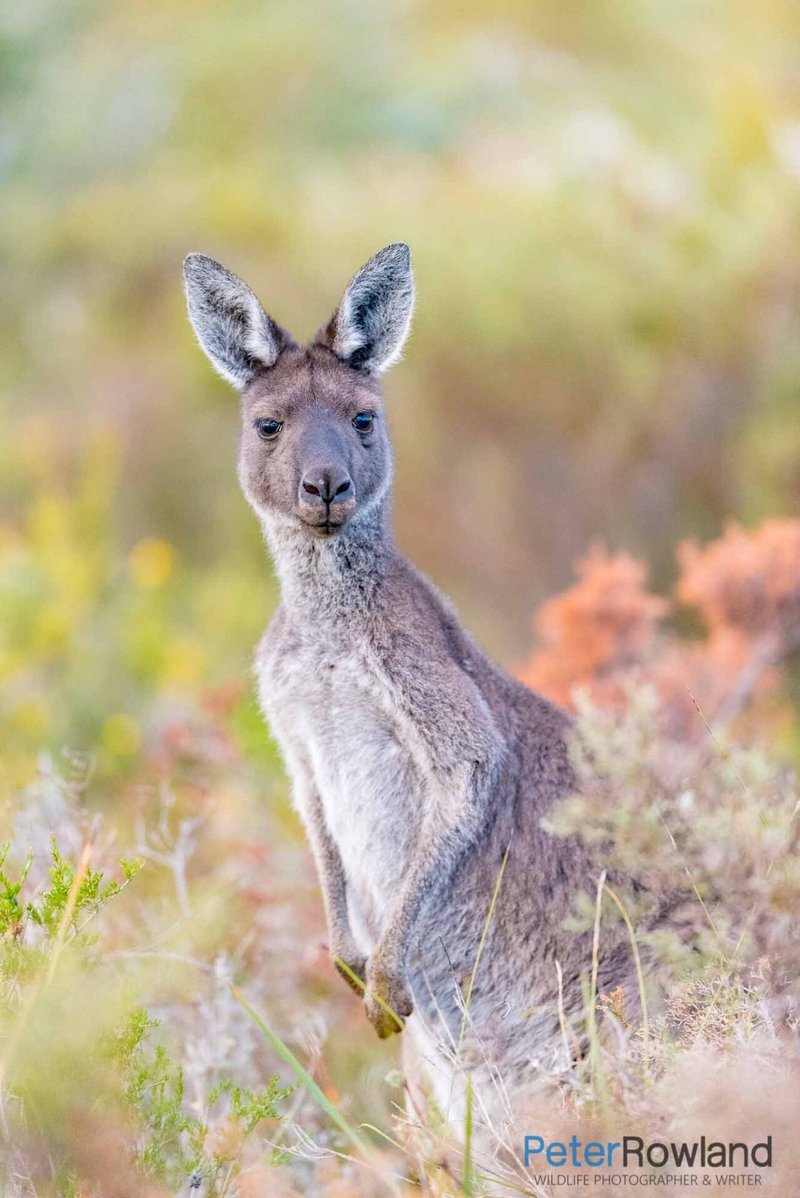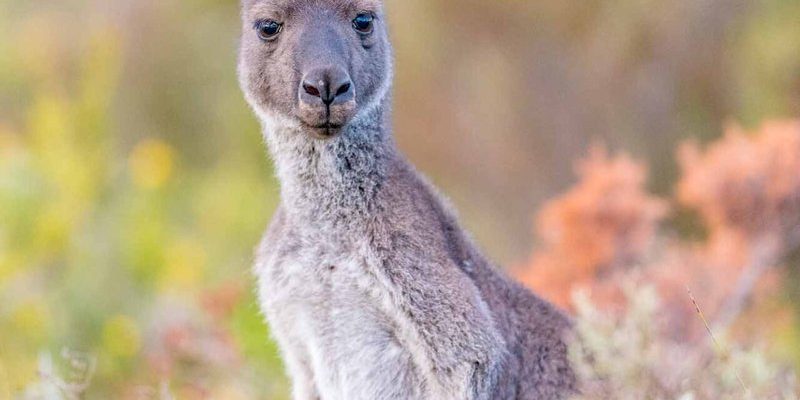
Imagine walking through an Australian bushland where the air is filled with the sounds of wildlife. This environment is a bustling community where every creature has its purpose. The Western Grey Kangaroo doesn’t just hop around – it influences the growth of plants, serves as a food source for predators, and even aids in seed dispersal. Let’s dive into their world and see how these kangaroos keep the ecosystem balanced.
What is the Western Grey Kangaroo?
The Western Grey Kangaroo, or Macropus fuliginosus, is medium-sized and primarily found in the southern parts of Australia. They have a distinctly grey coat that can vary in shades, which helps them blend into their surroundings. Typically, these kangaroos are social animals and often found in groups, called mobs, which can consist of several individuals.
These kangaroos are herbivores, primarily munching on grasses, leaves, and shrubs. Their diet is important as it directly impacts the vegetation in their habitat. By grazing on certain plants, they promote a diverse plant community, allowing for other species to thrive. This interaction showcases their role as a keystone species; their presence and behaviors significantly influence the environment around them.
The Role of Western Grey Kangaroos in Grazing
Grazing plays a significant role in maintaining the health of grasslands and other ecosystems. Western Grey Kangaroos help manage vegetation growth through their feeding habits. You might wonder, how does this work? Well, by eating grasses and young shoots, they prevent any single plant species from dominating the landscape.
This type of grazing leads to a more balanced ecosystem where diverse plant life can flourish. In many ways, it’s like a gardener tending to a garden; by carefully selecting which plants to prune, they allow others to grow stronger and taller. This allows different animals and insects to thrive, creating a rich tapestry of life.
Additionally, kangaroo grazing can enhance soil health. Their movement through the grasslands stirs up the soil, and their droppings add nutrients. So, not only are they munching away, but they’re also helping the ground become richer and more fertile.
Seed Dispersal and Plant Regeneration
Have you ever thought about how seeds travel from one place to another? Western Grey Kangaroos contribute significantly to this process. As they chew on various plants, they often consume seeds, taking them a great distance from their original location.
When these kangaroos drop the seeds—thanks to their digestive systems—they help to regenerate plants. This form of seed dispersal ensures that new life can sprout in different areas, which is vital for maintaining biodiversity. By moving and depositing seeds, these kangaroos act as nature’s gardeners, helping to spread various plants across the landscape.
Moreover, certain plants have evolved to rely specifically on kangaroos for seed dispersal. This relationship illustrates a beautiful example of how interconnected life can be. If you take the kangaroos out of this equation, some plants may struggle to reproduce, leading to a decline in their populations.
Predator-Prey Interactions
In nature, every animal plays a role, and the Western Grey Kangaroo is no exception. As herbivores, they serve as a primary food source for various predators, including dingoes and eagles. This predator-prey relationship is essential for the health and balance of the ecosystem.
By being a food source, kangaroos help maintain the populations of their predators. This balance is crucial; if kangaroo numbers were to decrease rapidly, it could lead to an overpopulation of predators. On the flip side, if predator numbers drop too low, kangaroo populations could explode, leading to overgrazing and vegetation loss.
It’s a cycle that illustrates the delicate dance of nature. Imagine a seesaw—too much weight on one side causes it to tip. The same goes for ecosystems; every species must be in balance for the environment to flourish.
Kangaroos and Cultural Significance
Beyond their ecological roles, Western Grey Kangaroos hold deep cultural significance for Indigenous Australians. They are not just animals that roam the land; they are part of stories, traditions, and a way of life. Many Aboriginal cultures celebrate kangaroos through art, dance, and mythology, highlighting their importance in the ecosystem and in human lives.
This relationship between kangaroos and people emphasizes the broader importance of wildlife conservation. Preserving their habitats means preserving the cultural practices and connections that many communities hold dear. It reminds us that ecosystems are not just about the animals and plants; they’re about people, too.
Challenges Facing the Western Grey Kangaroo
As charming as they are, Western Grey Kangaroos face several challenges. Urban development, agriculture, and climate change impact their populations and habitats. As cities expand, their natural environments shrink, making it harder for them to find food and shelter.
Moreover, climate change alters the landscape and may shift their food sources. This means that kangaroos might struggle to adapt to rapidly changing conditions, affecting their health and survival.
Addressing these challenges requires a collective effort. Conservation programs and sustainable practices are needed to ensure that these kangaroos continue to thrive in their natural habitats. As part of the broader ecosystem, their survival is essential for maintaining balance.
The Future of Western Grey Kangaroos
The future of the Western Grey Kangaroo depends on how we interact with their environment. If we change our approach to land use and prioritize conservation, there’s hope for these amazing creatures. Programs aimed at habitat restoration and protection are crucial in ensuring future generations can witness the beauty of kangaroos in the wild.
Educating communities about the importance of these kangaroos can also drive positive change. When people understand the role of Western Grey Kangaroos in the ecosystem, they may be more motivated to protect their habitats.
Ultimately, it’s about recognizing the value of biodiversity and the interconnected web of life. The Western Grey Kangaroo is not just a hopping figure in the Australian landscape; it’s a crucial player in maintaining ecological balance, and that’s something worth protecting.
In summary, the Western Grey Kangaroo’s role in its ecosystem reflects the intricate connections that bind all living things together. From grazing and seed dispersal to being part of cultural narratives, these kangaroos are vital components of their environment. By understanding and protecting them, we safeguard not just kangaroos but the entire ecosystem they help support.

